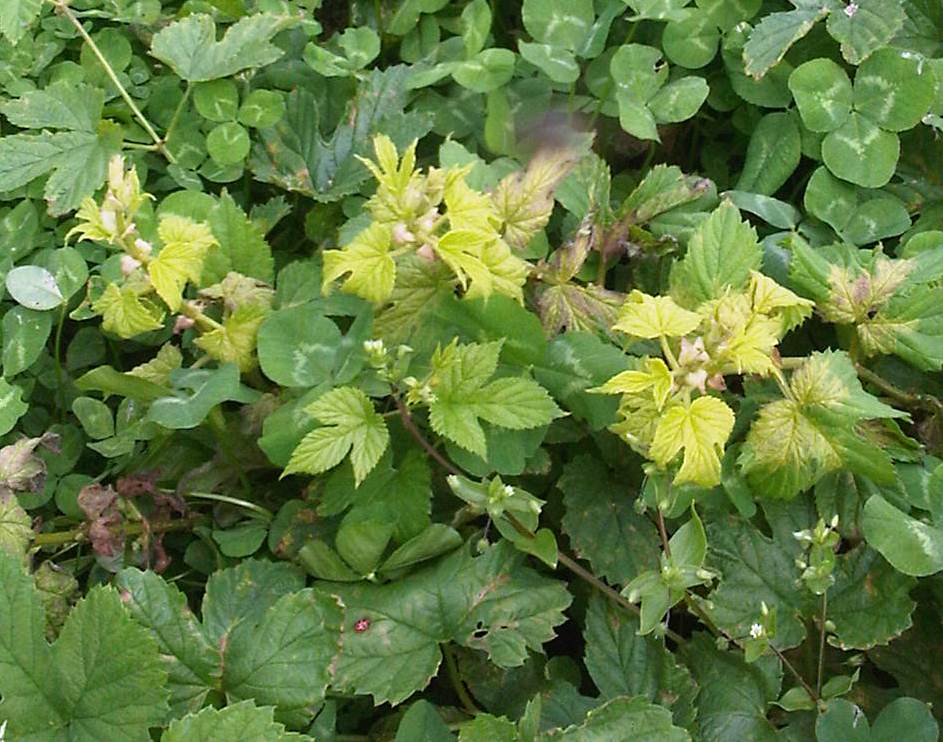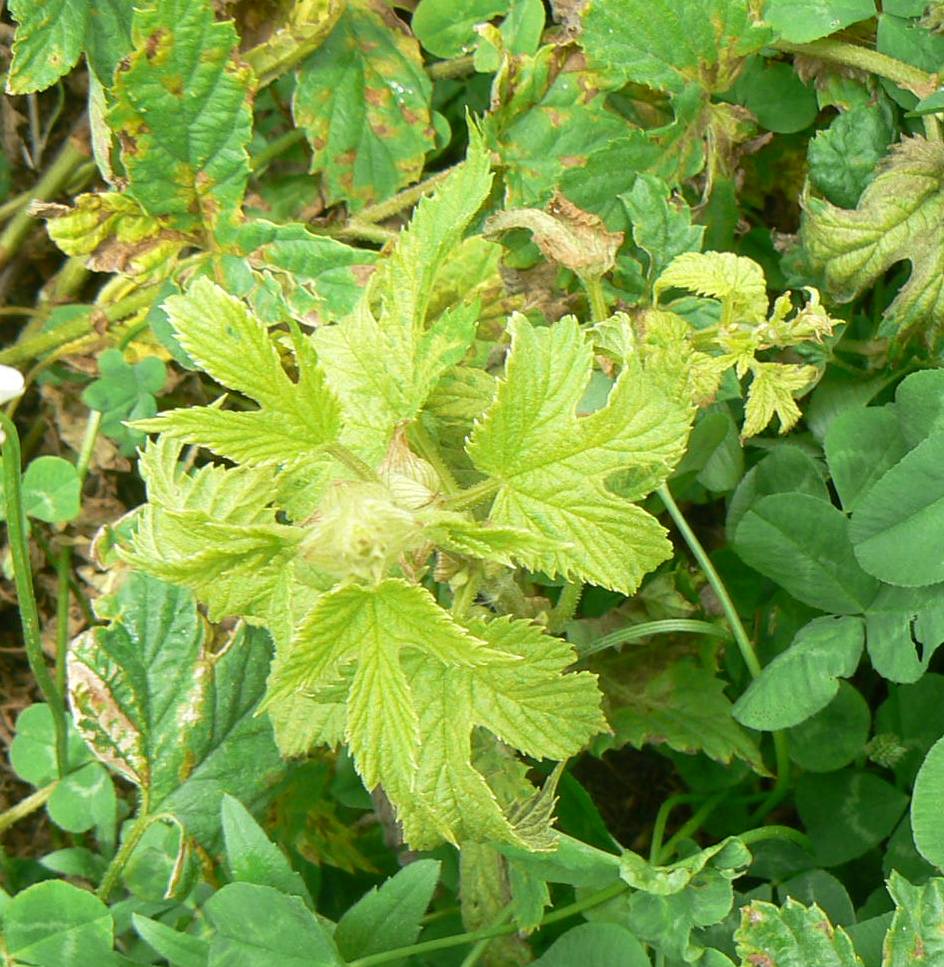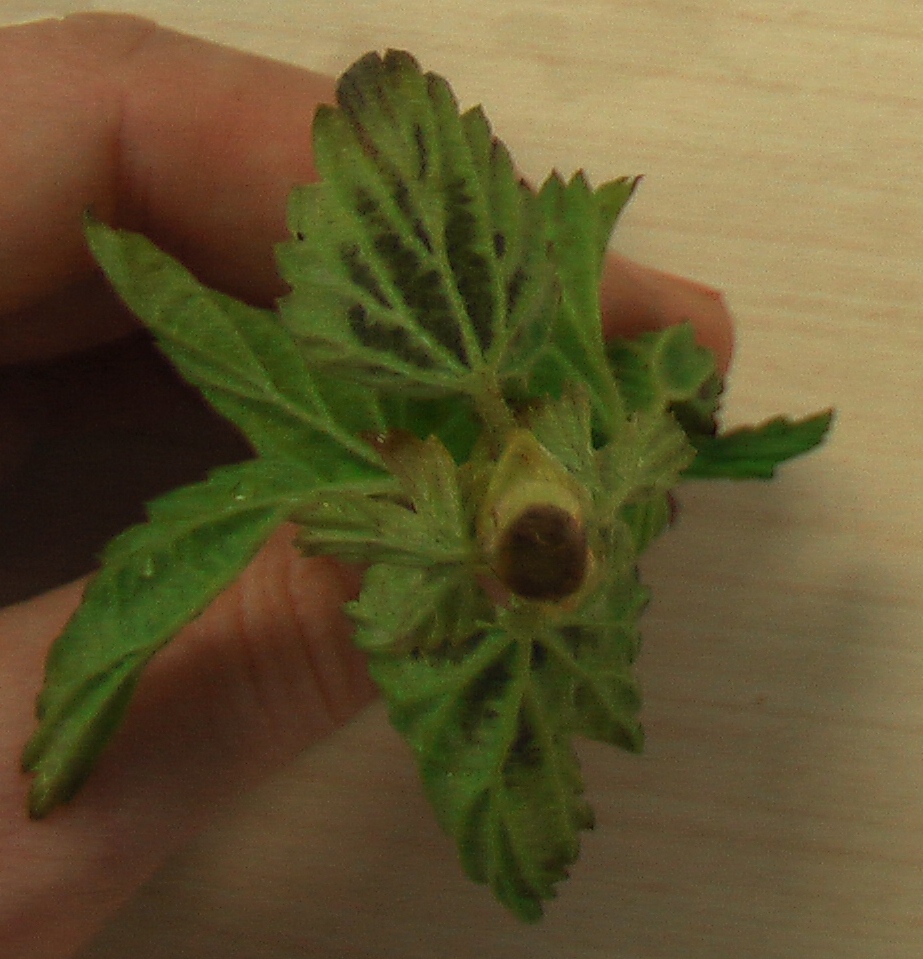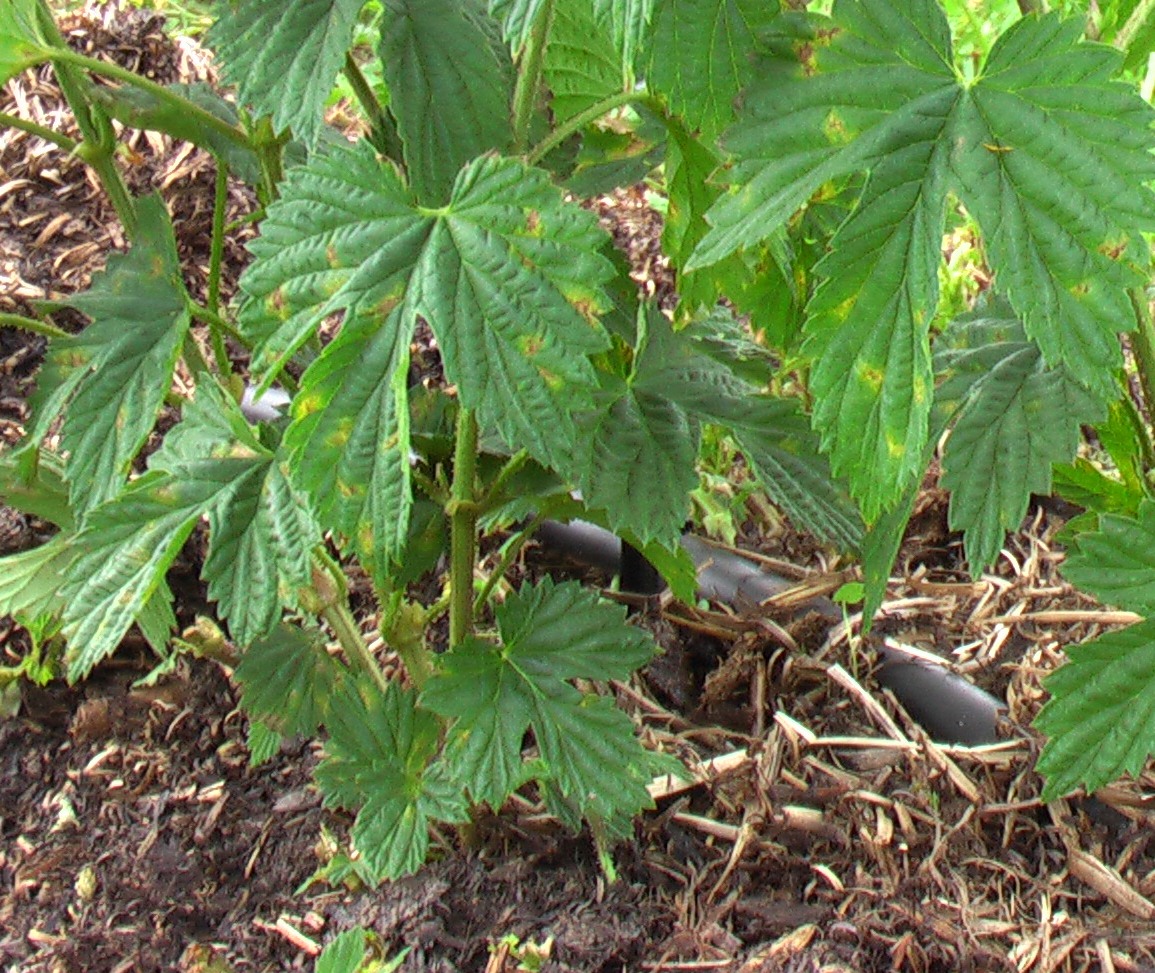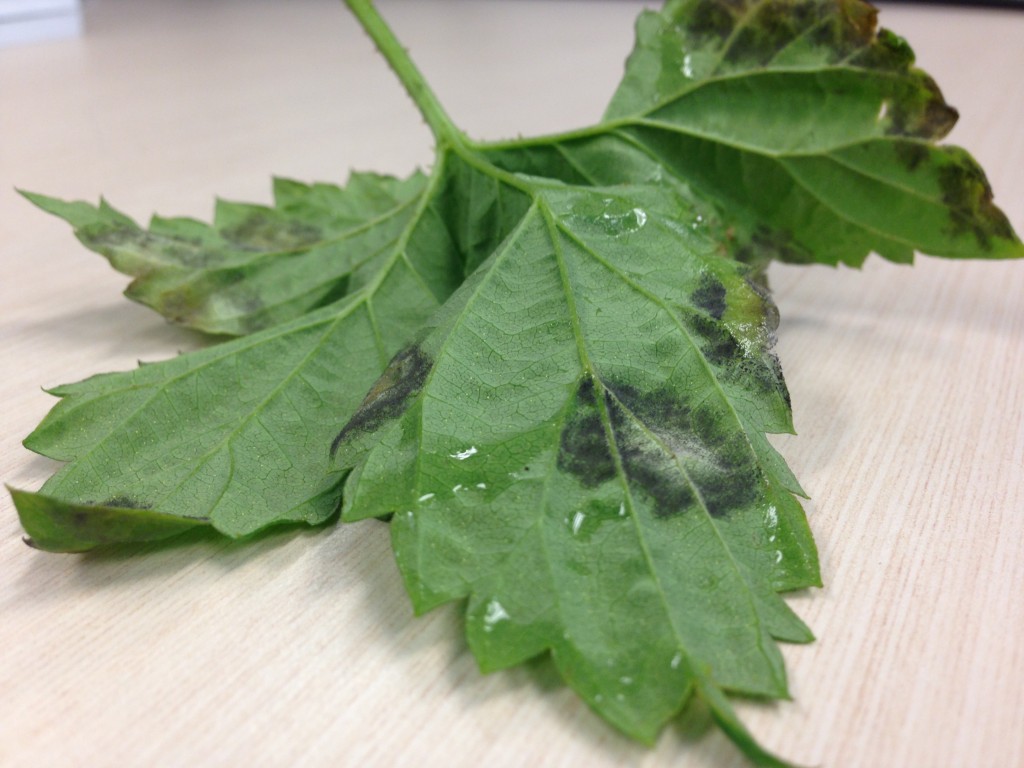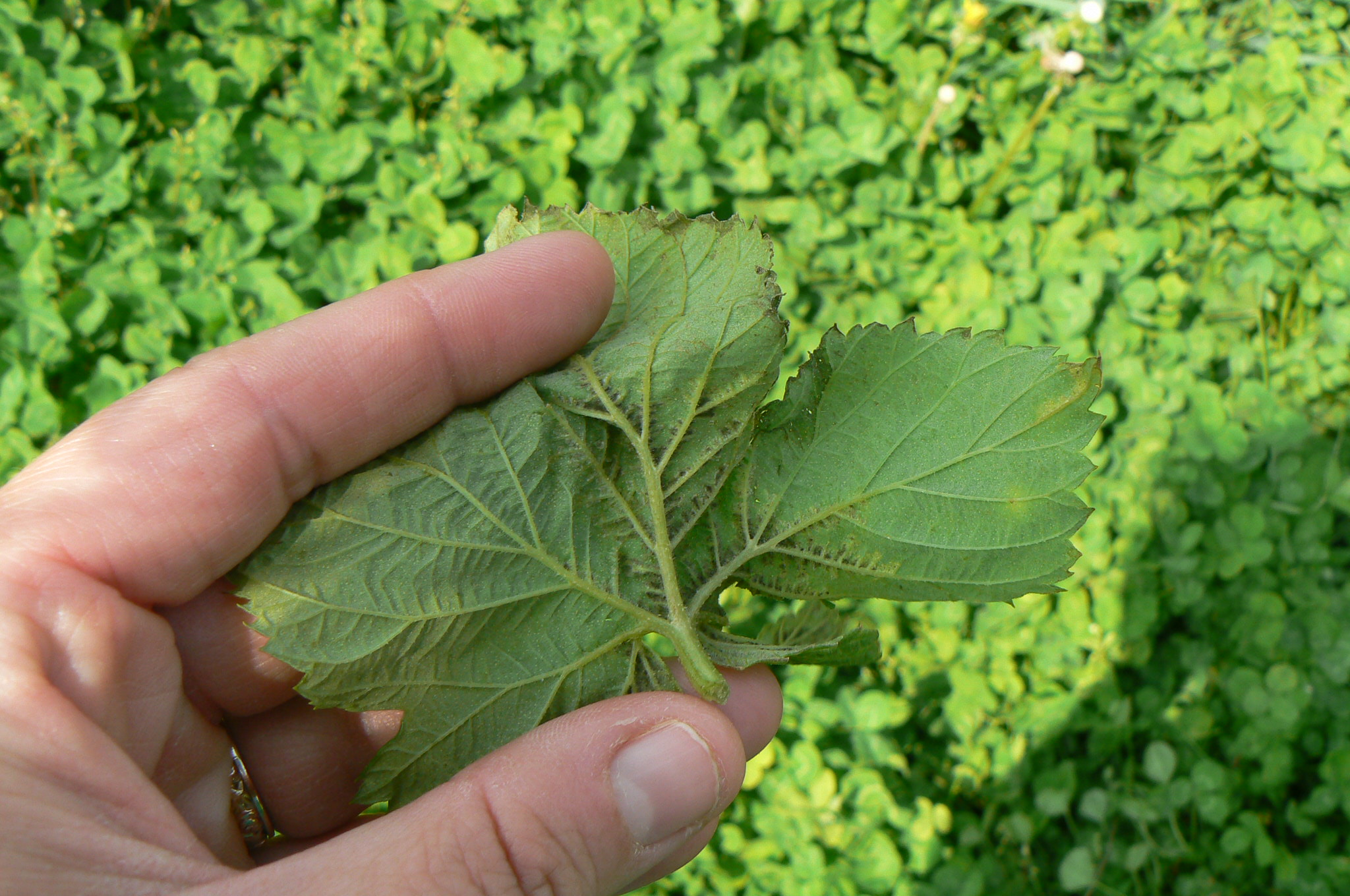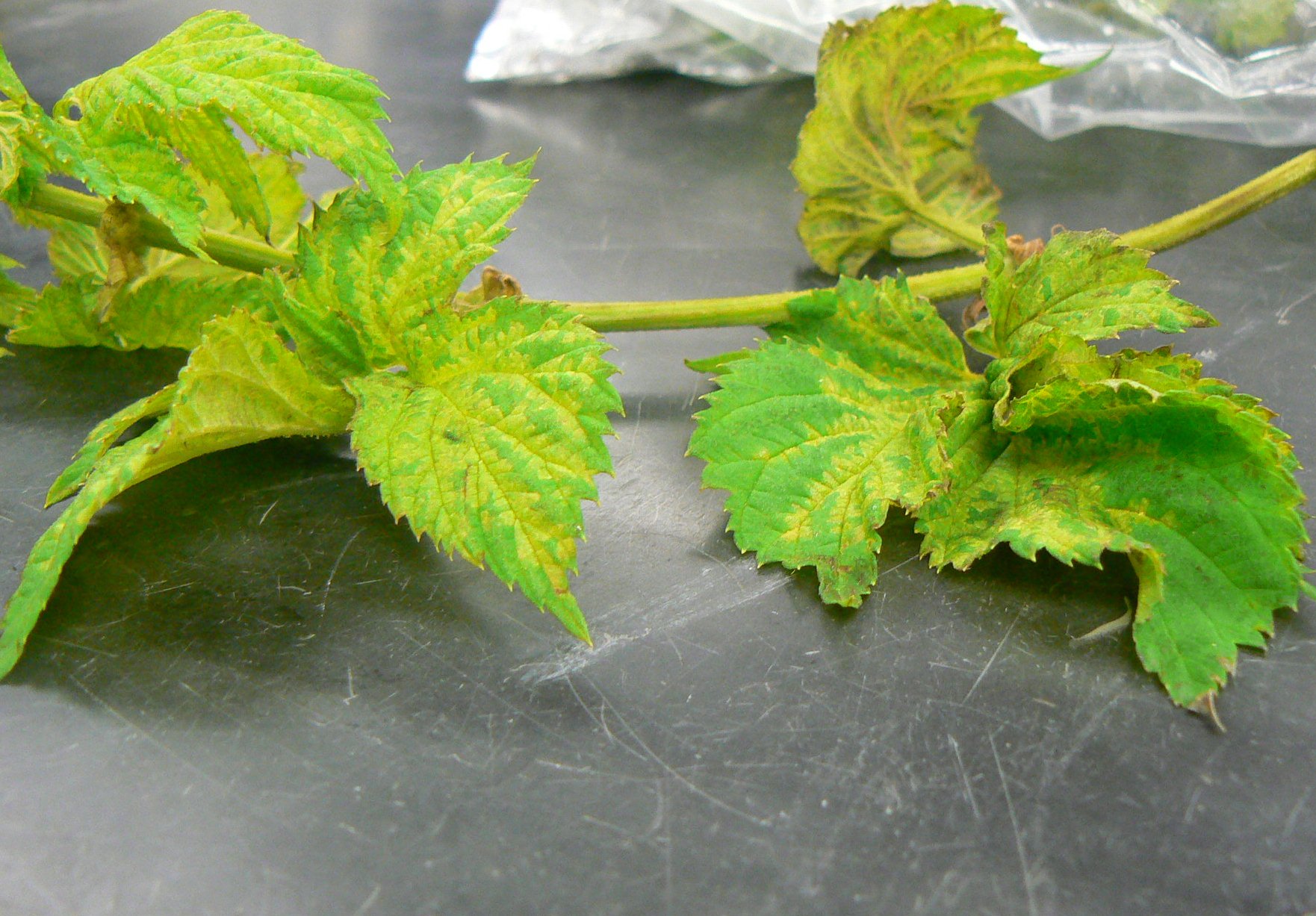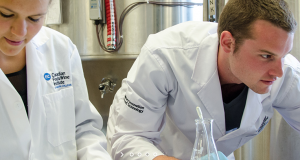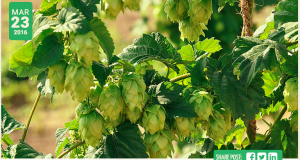By: Melanie Filotas – IPM Specialist | OMAF/MRA | ONspecialtycrops | June 2014
Over the last week we’ve had a number of reports of hops downy mildew throughout Ontario. While many growers have successfully identified symptoms while training, others have asked for some assistance in identifying the major symptoms. What follows is a review of what to look for.
When scouting for symptoms, remember that hops downy mildew can cause both systemic infections in crowns, shoots, stems and leaves, or localized infections caused by spores landing on plant surfaces. In the spring, downy mildew overwintering in infected crowns can result in the production of systemically infected shoots, called basal spikes. Many growers have noticed these basal spikes while training. Look for stunted shoots with shortened internodes (the portion of the stem between points where the leaves attach) with downward-curling, yellow, brittle leaves. These are often quite noticeable.
The undersides of infected leaves are often covered with a characteristic dark, purple-black growth, which are the spores (actually sporangia).
Sporangia are produced when humidity is high, so if you are checking plants during the day when it is hot and dry, this sporulation may be reduced or absent. If you don’t see the sporulation but suspect downy mildew, place the spike in a plastic bag with a damp paper towel and leave at room temperature overnight.
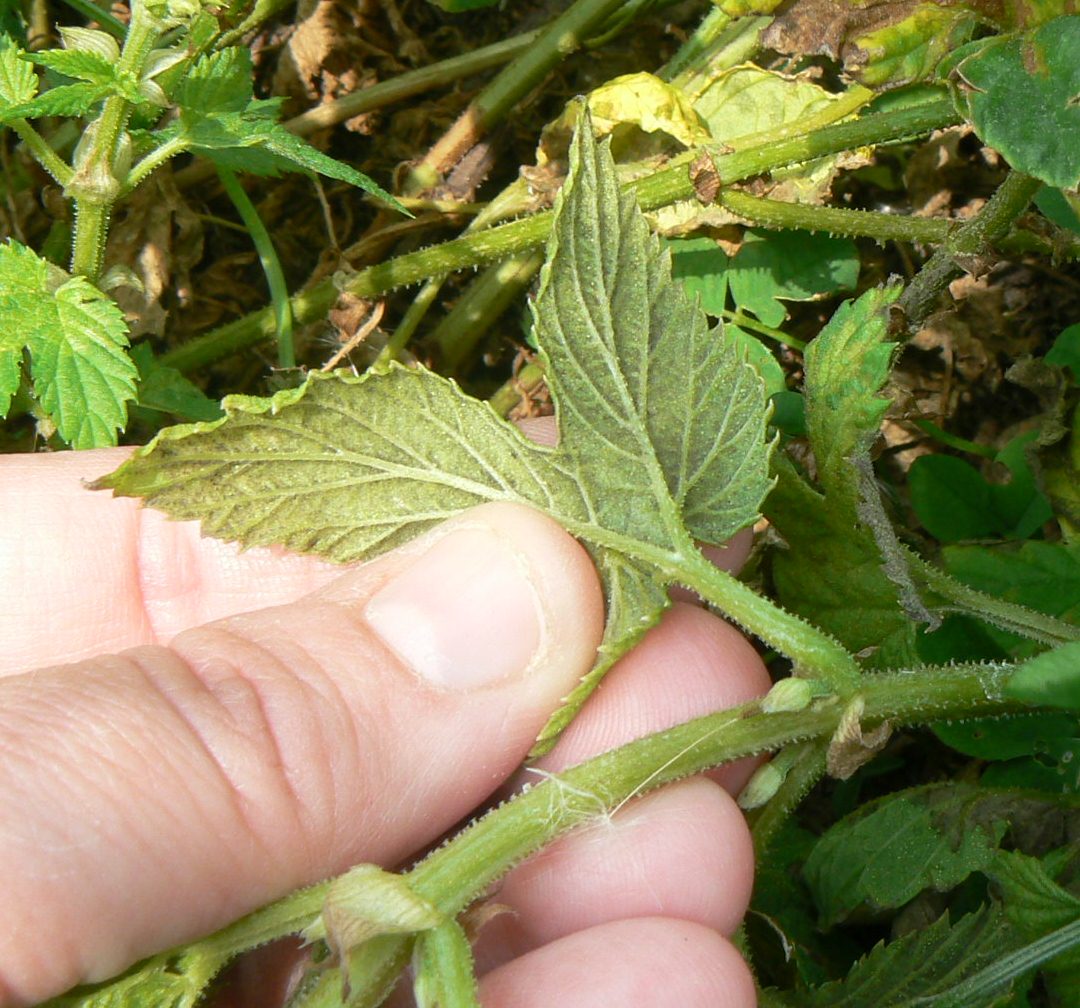
Underside of a basal spike in the field in the middle of the day. Note that the sporulation is less distinct.
When spores land on and infect a leaf, they produce localized lesions. These are visible as yellow lesions on the upper surface of the leaf that are often confined by the leaf veins, giving them an angular appearance. As the infection progresses, the lesions become light to dark brown and are surrounded by a yellow halo.
Purplish grey to black sporulation will also occur on the leaf underside corresponding to the lesion, however this growth will typically be most noticeable in the morning when leaves are wet. As with basal spikes, placing suspect leaves in a moist paper bag overnight can help induce sporulation to aid in diagnosis.
Downy mildew can also produce systemically infected lateral shoots, sometimes called aerial spikes. These are starting to appear in some hop yards. Symptoms will be similar to basal spikes, however the internodes may not be as shortened, and the symptoms will only occur from the point of infection outwards, while plant tissue below this point will appear normal. On a basal spikes, symptoms typically occur from the ground up.
In some cases, as the infection proceeds down the leaf vein the tissue becomes chlorotic, leading to a mottled pattern that can be mistaken for virus or nutrient deficiency symptoms. In contrast to these other problems, you can often see sporulation on the leaf underside in association with the chlorosis, and typically affected plants will have, or be close to plants with, other symptoms of downy mildew.
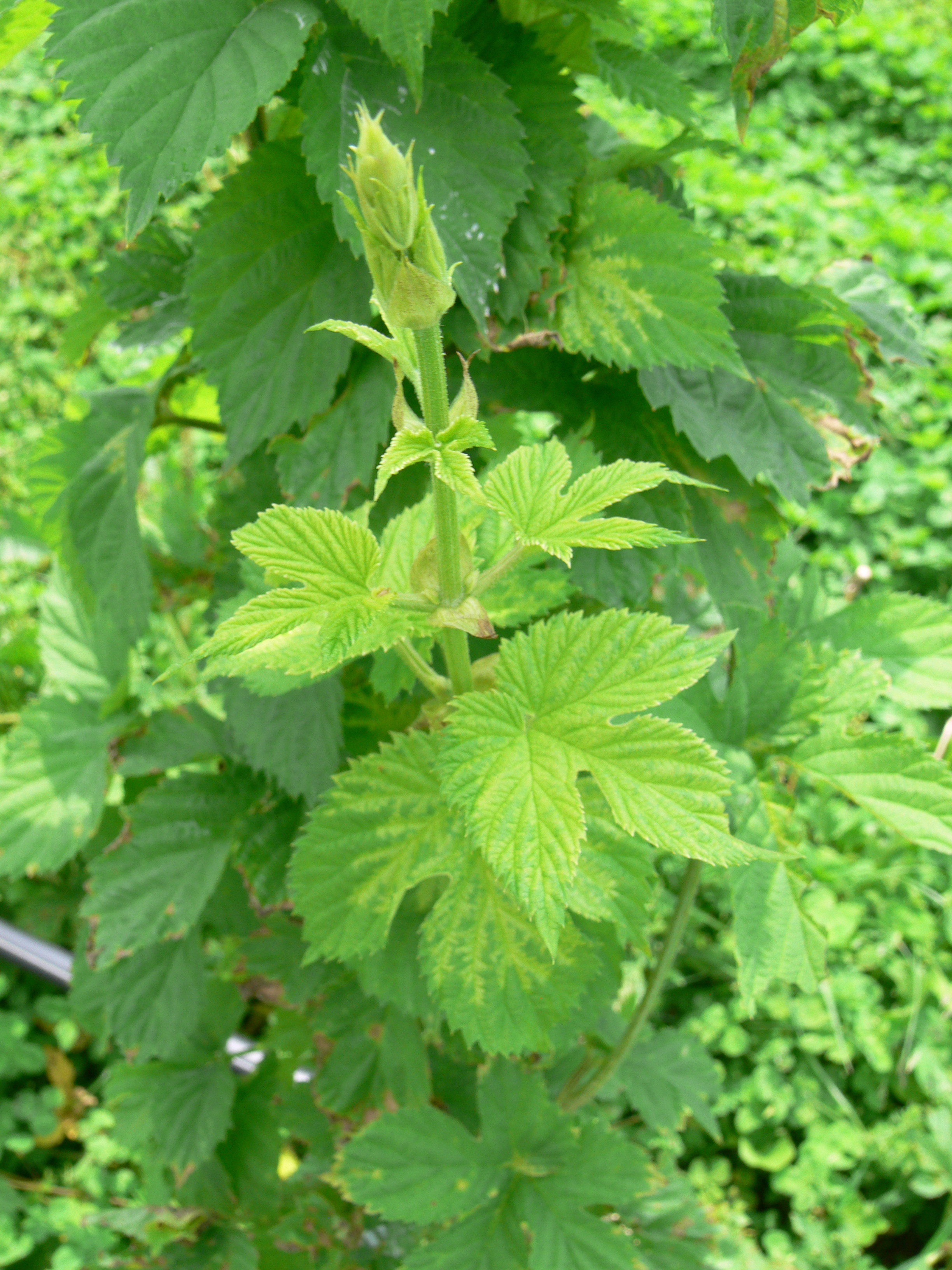
Systemically infected lateral shoot. Note the mottled pattern on the lower leaf as the infection proceeds down the leaf.
A more detailed discussion of hops downy mildew symptoms and biology will be appearing in an upcoming issue of the OMAF newsletter HortMatters.
To read the original article, please click here.
 Ontario Hop Growers' Association The OHGA is a not-for-profit association of hop growers, families and enthusiasts who are interested in supporting the growth of the hop industry in Ontario.
Ontario Hop Growers' Association The OHGA is a not-for-profit association of hop growers, families and enthusiasts who are interested in supporting the growth of the hop industry in Ontario.
